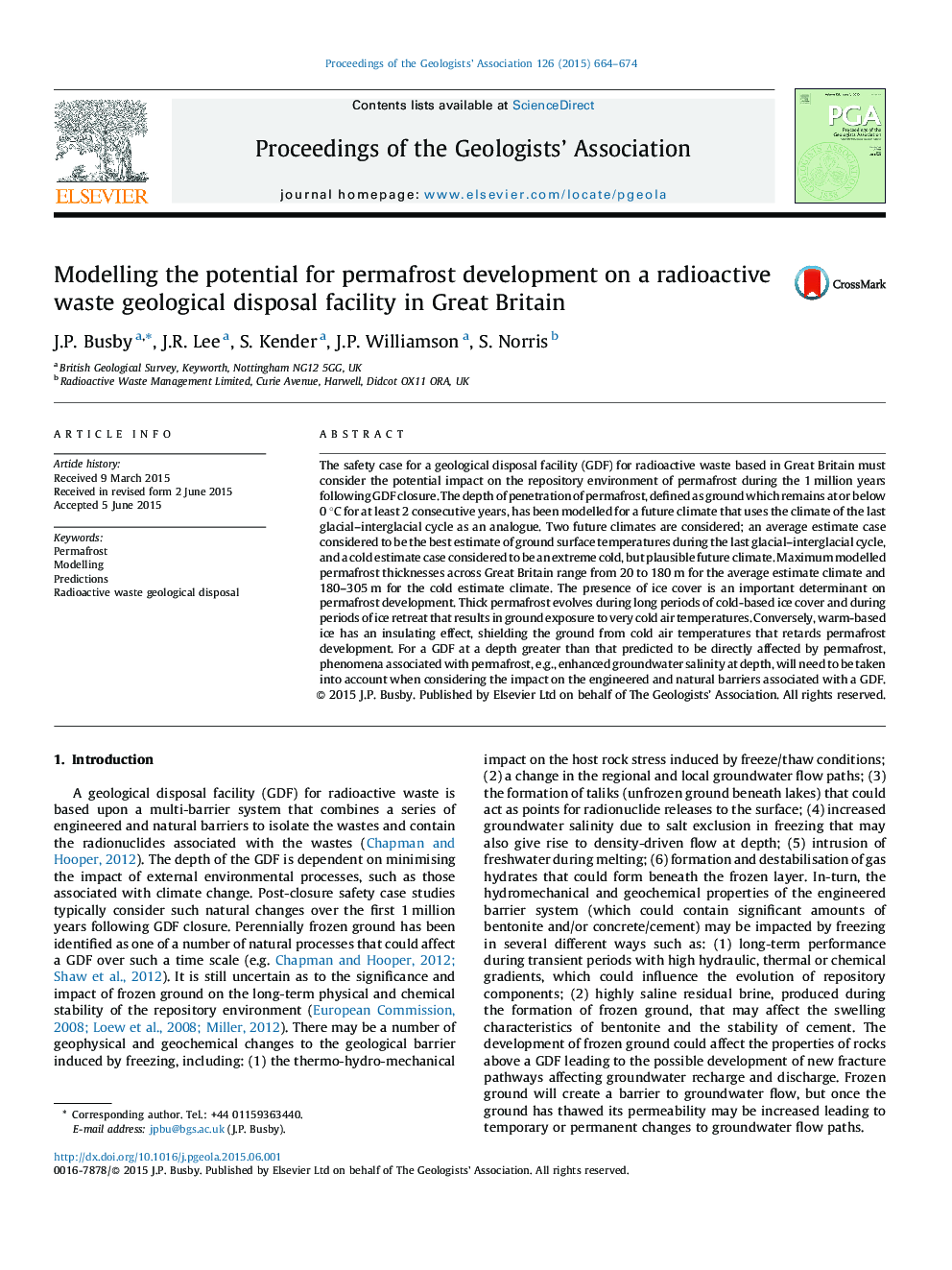| Article ID | Journal | Published Year | Pages | File Type |
|---|---|---|---|---|
| 6445312 | Proceedings of the Geologists' Association | 2015 | 11 Pages |
Abstract
The safety case for a geological disposal facility (GDF) for radioactive waste based in Great Britain must consider the potential impact on the repository environment of permafrost during the 1 million years following GDF closure. The depth of penetration of permafrost, defined as ground which remains at or below 0 °C for at least 2 consecutive years, has been modelled for a future climate that uses the climate of the last glacial-interglacial cycle as an analogue. Two future climates are considered; an average estimate case considered to be the best estimate of ground surface temperatures during the last glacial-interglacial cycle, and a cold estimate case considered to be an extreme cold, but plausible future climate. Maximum modelled permafrost thicknesses across Great Britain range from 20 to 180 m for the average estimate climate and 180-305 m for the cold estimate climate. The presence of ice cover is an important determinant on permafrost development. Thick permafrost evolves during long periods of cold-based ice cover and during periods of ice retreat that results in ground exposure to very cold air temperatures. Conversely, warm-based ice has an insulating effect, shielding the ground from cold air temperatures that retards permafrost development. For a GDF at a depth greater than that predicted to be directly affected by permafrost, phenomena associated with permafrost, e.g., enhanced groundwater salinity at depth, will need to be taken into account when considering the impact on the engineered and natural barriers associated with a GDF.
Keywords
Related Topics
Physical Sciences and Engineering
Earth and Planetary Sciences
Geology
Authors
J.P. Busby, J.R. Lee, S. Kender, J.P. Williamson, S. Norris,
